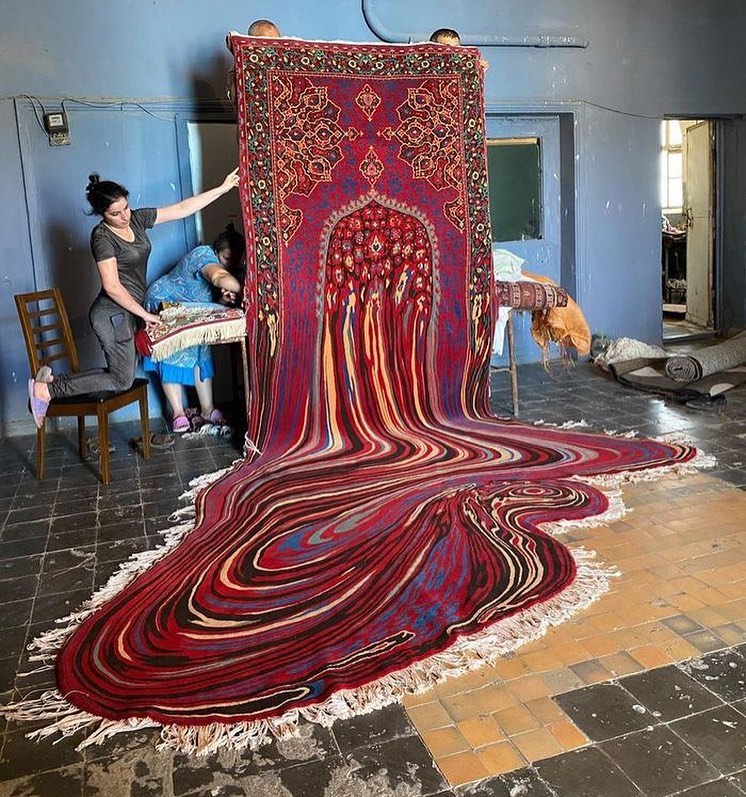
Armenian Terrorism
An article in yesterday's editions incorrectly identified Hans Rogger. He is chairman of the history department at the University of California Los Angeles.
By Jay MathewsMay 17, 1982
As professor of Turkish and Near Eastern history at UCLA, Stanford J. Shaw had never before had to worry about being a campus celebrity. But because of a series of events in eastern Turkey in 1915, he has dropped his lecture course and gone into hiding, one more victim of one of the bloodiest but least-noticed terror campaigns in this country.
Stemming from a much-disputed historical incident which few alive can still remember, the campaign began with a double murder in Santa Barbara in 1973 and now totals at least 117 violent incidents worldwide, including the May 4 assassination of honorary Turkish consul Ohran R. Gunduz in the Boston area and the Jan. 28 murder of Kemal Arikan, the Turkish consul general in Los Angeles.
Armenian terrorists have been involved in bombings, firebombings and assaults in several countries. The campaign involves charges of genocide, international intrigue, and scholastic chicanery. Yet, because two groups relatively obscure to Americans--Armenians and Turks--are usually the only ones directly touched by the violence, it has escaped general notice.
"When one of your children dies, many years may pass and you can say it is all in the past, but it still hurts," said Yeghishe Manjikian, pastor of the Holy Trinity Armenian Apostolic Church in Fresno, explaining how the Armenian terrorist campaign can continue so long after the event it is intended to avenge.
In the spring of 1915, according to historical accounts, on the semi-arid plateau of eastern Turkey, part of the Armenian homeland for three millennia, Turkish officials were frightened and angered by Armenian sympathy for an invading Russian army and fed up with having to deal with a Christian minority whom they, as Moslems, had never really trusted. The Turks ordered evacuation of all Armenians in the rural areas of eastern Turkey. But the evacuation soon turned into a massacre, the accounts say, with Turkish troops executing able-bodied Armenian men and leaving women and children to die of disease and exposure in the wilderness.
In a passage often quoted by Armenians, the then-U.S. ambassador to the Turkish Ottoman Empire wrote: "When the Turkish authorities gave the orders for these deportations, they were merely giving the death warrant to a whole race; they understood this well . . . . I have by no means told the most terrible details. . . ."
"They took all the menfolk, had them dig their own graves, and shot them to death," said Narti Nahabdian Gerlitz, a 73-year-old Fresno resident who is one of the few people left who witnessed part of the massacre. Gerlitz, then a child, and her mother, expelled from their village of Bitlis, managed to reach Istanbul and later migrated to the United States along with thousands of others.
The Turkish government disputes accounts of what Armenians and many Europeans and Americans considered one of the most serious cases of genocide in history until the Nazis' extermination of European Jews in World War II. Frustration over the Turks' failure to apologize to surviving Armenians, and the failure to realize the Armenian dream of a homeland along the Turkish-Soviet border, erupted into violence in the 1970s. A few young Armenians, many of them based in Lebanon, apparently began their campaign after they saw the way terrorist groups like the Palestine Liberation Organization had dramatized their causes, according to several Armenian-Americans and a State Department official.
Most of the estimated 600,000 persons of Armenian descent in the United States appear to oppose the violence, although many say they sympathize with its motives. Richard G. Hovannisian of UCLA, a historian of Armenian extraction, said that decades of unsuccessful appeals to national governments and international bodies taught Armenians that "the success or failure of a cause had little to do with what they consider to be the concepts of political morality and justice."
In the last nine years, 20 Turkish diplomats or their family members have been killed worldwide and 60 others have been wounded. At least six separate Armenian terrorist groups bombed or damaged Turkish embassy property in Beirut, Paris, Vienna, Madrid, Berne, the Hague, Brussels, Athens and Geneva. Turkish airline offices have been bombed in Rome, London, Amsterdam, Milan, Paris, Geneva, Frankfurt, and Copenhagen. Also bombed were the Ottoman Bank in London and the airport and Galata Bridge in Istanbul.
Armenian terrorists were responsible for six of the 42 reported incidents of terrorism in the United States in 1981, the FBI says.
In California, which has about 100,000 residents of Armenian descent, more than there are in Turkey, police officials have been concerned about small terrorist bands of young Armenians. Los Angeles police officer William Booth noted that his city "has been relatively free" of major terrorist activity until the recent murder of Arikan and the earlier firebombing of Arikan's house.
Police arrested Harry M. Sassounian, 19, a Beirut-born Armenian who came here five years ago, in connection with the murder of Arikan, who was shot as he sat in his car at a traffic signal. Sassounian has pleaded innocent. A second suspect, identified as Krikor (KoKo) Saliba, 21, is still at large. A trial of Sassounian's brother, Harout, for the 1980 firebombing of Arikan's residence, ended in mistrial this month because of publicity about the Boston-area killing.
The Sassounians' arrests marked one of the few occasions when members of the small, difficult-to-infiltrate Armenian terrorist groups have been identified. No arrests have been made in the Massachusetts slaying.
Neither have any arrests have been made in the 1977 firebombing of the home of Shaw, the UCLA professor, who supports Turkish accounts of the events of 1915. Shaw stopped teaching and apparently left town with his Turkish wife, Ezel Kural Shaw, who teaches history at California State University Northridge, shortly after campus police were warned that a "Turkish professor" might become a target.
UCLA officials refused to disclose the Shaws' whereabouts but agreed to deliver a letter addressed to him. A woman identifying herself as Ezel Kural Shaw telephoned in response to the letter but declined to discuss hers or her husband's location or plans. "We are at people's mercy," she said.
Hans Rogger, chairman of the history department at California State University Northridge, called the threat against Shaw "deplorable," adding, "Certainly a professor should be able to teach his classes." Hovannisian, the historian at UCLA, agreed, but he added: "I have grave reservations about the caliber of his scholarship."
The longstanding dispute between Shaw and Hovannisian over the events of 1915 distills the academic controversy over the incident. In his "History of the Ottoman Empire and Modern Turkey," which he wrote with his wife, Shaw argues that the usual Armenian estimate of more than 1 million Armenians killed in the massacre is probably inflated because the Ottoman census showed only 1.3 million Armenians in the whole country and only half of those lived in areas affected by the deportations.
Estimating that about 700,000 fled the country, the Shaws suggest that about 300,000 died. But they add that their search of Ottoman records revealed no evidence of a planned policy of genocide. Instead, they said, the government tried its best to control a situation in which "some 6 million people--Turks, Greeks, Arabs, Armenians, Jews and others--were being killed by a combination of revolts, bandit attacks, massacres and counter-massacres, and famine and disease, compounded by destructive and brutal foreign invasions. . . . "
Hovannisian condemns the Shaws for what he calls unsupported statements that Armenian assaults on Turks set off the massacre and for overlooking earlier official Turkish assaults on Armenian minorities. He says other sources indicate the actual Armenian population was much higher than 1.3 million and that the evacuation affected a much broader area than the Shaws said it did. As for the Shaws' contention that official Turkish records show no evidence of a genocide policy, Hovannisian said: "It is pretentious to expect that if documents relating to the government's role in the Armenian massacres still exist they would be made accessible to an American--or for that matter any--researcher. The issue has been one of extreme sensitivity for every Turkish cabinet since the end of World War I."
Most Armenian-Americans say they do not expect the Turkish government to restore their homeland, but they think an apology is due. The Turkish government, however, has remained adamant. The charge of a systematic massacre of Armenians in 1915 is "totally baseless," Ambassador Sukru Elekdag told the Los Angeles World Affairs Council in November, and an official at the Turkish Embassy said last week that the ambassador stands by the statement.
The official endorsed an account in a recent Turkish publication which said that "the stories of massacres were in fact largely invented by Armenian nationalist leaders in Paris and London during World War I and spread throughout the world through the British intelligence."
Source: washingtonpost.com



Comments
Show comments Hide comments